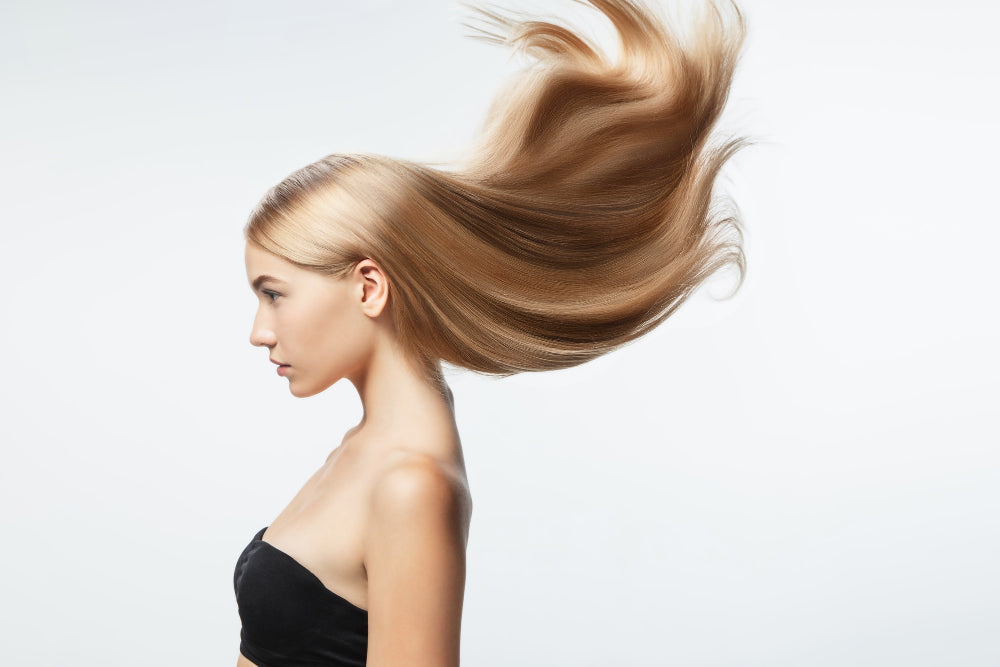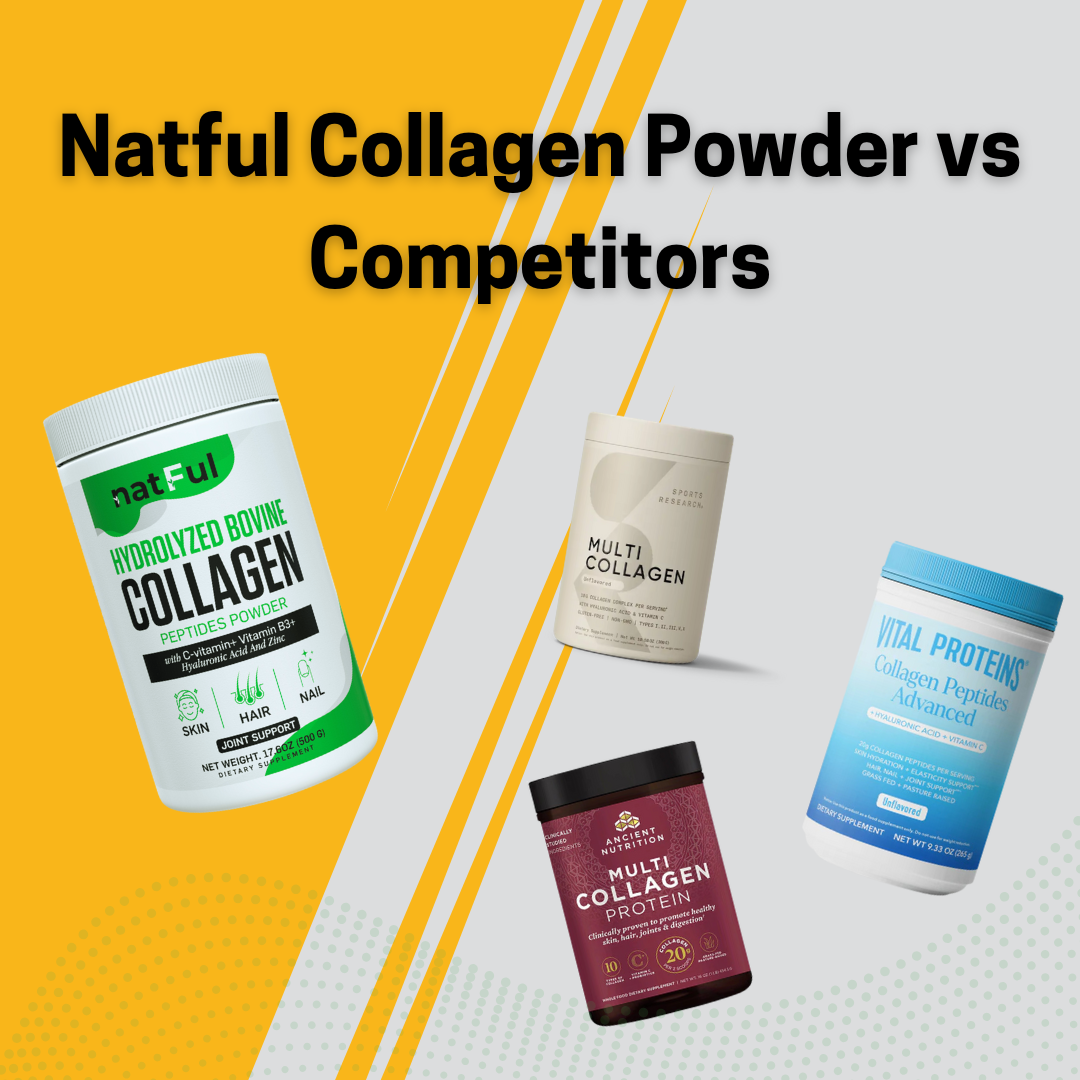The Ultimate Guide to Growing Longer, Healthier Hair
Have you ever wondered why some people seem to have effortlessly long, healthy hair while others struggle with breakage and thinning strands? In reality, every person has between 80,000 to 120,000 hair follicles, and that number is set for life. You cannot create more hair follicles, but what you can do is make your existing hair stronger, reduce breakage, and optimize growth.

Dr. Sam Ellis, a board-certified dermatologist, explains in her video “How To Grow Longer, Healthier Hair Fast” that achieving longer hair isn’t about growing more hair—it’s about keeping the strands you already have as strong and resilient as possible. The secret lies in proper scalp care, hair care routines, nutrition, stress management, and hydration.
How Long Does Hair Growth Take?
Dr. Andrew Huberman, a neuroscientist and professor at Stanford University, highlights that hair grows at an average rate of about 0.5 inches (1.25 cm) per month, which means roughly 6 inches (15 cm) per year under optimal conditions. However, this rate can vary due to factors like genetics, hormonal balance, overall health, and diet. He also explains that the anagen (growth) phase of hair follicles lasts between 2 to 7 years, meaning that people with longer anagen phases naturally have longer hair. Supporting this phase through proper nutrition, scalp health, and stress management is key to achieving maximum hair length.
Let’s dive into the best science-backed tips for achieving healthier, longer hair.
1. Scalp Care: The Foundation of Hair Growth

Think of your scalp as the soil where your hair grows—if it’s not healthy, your hair won’t be either. A clean, nourished scalp is essential for strong hair growth.
-
Scalp Cleanliness: Regularly washing your scalp helps remove excess oil, dirt, and product buildup that can clog hair follicles. Use a gentle, sulfate-free shampoo to avoid stripping natural oils while keeping your scalp fresh.
-
Exfoliation: Just like your skin, your scalp benefits from occasional exfoliation. Scalp scrubs or exfoliating shampoos remove dead skin cells and promote better hair follicle function.

-
Shampoos & Conditioners: Choose products based on your hair type. If you have an oily scalp, go for clarifying shampoos. If your scalp is dry, use hydrating shampoos with ingredients like aloe vera or glycerin. Conditioners should be applied from mid-length to ends, not directly on the scalp, to avoid buildup.

-
UV Protection: The sun can damage your hair and scalp, leading to dryness and breakage. Use a hat or UV protection sprays to shield your scalp from harmful UV rays.
-
Heat Protection: If you use blow dryers, curling irons, or straighteners, always apply a heat protectant beforehand to minimize heat damage.
2. Hair Care Practices: Preventing Breakage
While scalp health is the foundation of strong hair, daily hair care routines determine how much breakage occurs.
-
Gentle Brushing: Avoid aggressive brushing, especially when your hair is wet. Use a wide-tooth comb or detangling brush to minimize breakage.
-
Limit Heat Styling: Overuse of heat tools weakens hair proteins, making it prone to breakage. If you must style with heat, set tools on a low-heat setting and use heat protectant sprays.
-
Avoid Tight Hairstyles: Constantly pulling hair into tight ponytails or buns can cause tension and breakage, leading to traction alopecia over time.

-
Silk or Satin Pillowcases: Cotton pillowcases cause friction, leading to tangles and breakage. Sleeping on silk or satin pillowcases reduces hair damage overnight.
3. Nutrition for Hair Growth: Feeding Your Follicles
Hair isn’t a vital organ, which means your body prioritizes other functions over hair health when nutrients are lacking. To ensure hair gets the nutrients it needs, maintain a balanced diet with essential vitamins and minerals:
-
Collagen & Protein: Hair is made of keratin, a protein, so ensuring enough protein intake is crucial. Collagen supplements (like NATFUL’s collagen peptides) provide amino acids like glycine and proline, which support hair structure.
-
Zinc: Zinc is crucial for hair repair and growth. A deficiency can lead to shedding and slow growth.

-
Vitamin C: This vitamin helps in collagen production and aids iron absorption, ensuring proper blood circulation to hair follicles.

-
Vitamin B3 (Niacin): Helps improve blood flow to the scalp, nourishing hair follicles.
-
Biotin (Vitamin B7): Supports keratin production, promoting thicker and healthier hair.
-
Iron: Iron deficiency is a major cause of hair loss, particularly in women. Eat iron-rich foods like spinach, lentils, and red meat.
-
Omega-3 Fatty Acids: Found in fish, flaxseeds, and walnuts, omega-3s reduce inflammation and keep hair follicles healthy.
4. Stress Management: Reducing Hair Loss
Stress plays a significant role in hair health. Chronic stress triggers telogen effluvium, a condition where hair enters a shedding phase prematurely. Managing stress effectively helps prevent hair thinning.
-
Mindfulness & Meditation: Practicing relaxation techniques like meditation or deep breathing reduces stress hormone levels.

-
Exercise: Regular physical activity improves circulation, ensuring better nutrient delivery to hair follicles.
-
Adequate Sleep: Poor sleep weakens hair health. Aim for 7-9 hours per night for optimal hair growth.
5. Hydration: Keeping Hair Moisturized from the Inside Out
Dehydration directly impacts hair growth, leading to dry, brittle strands.
-
Drink Enough Water: Hair needs hydration from within, so drink at least 2-3 liters of water daily.
-
Use Hydrating Hair Products: Look for leave-in conditioners, masks, or hair oils containing hyaluronic acid, argan oil, or coconut oil.

6. Alternative Hair Growth Boosting Techniques
In addition to scalp care, hair care routines, and nutrition, there are advanced hair growth-boosting techniques that some individuals may explore. These methods should always be discussed with a dermatologist or trichologist before use:
-
Microneedling for Hair Growth: This technique involves using a dermaroller or a microneedling pen to create tiny punctures in the scalp, which may help stimulate collagen production and improve blood circulation to the hair follicles. Some studies suggest that when combined with topical treatments like minoxidil, microneedling can enhance hair regrowth.

-
Low-Level Laser Therapy (LLLT): Special head caps or laser combs emit low-level red light that is believed to improve cellular activity in hair follicles, potentially extending the anagen phase and reducing hair thinning.
-
PRP (Platelet-Rich Plasma) Therapy: A medical treatment where a patient’s own blood is processed to extract growth factor-rich plasma, which is then injected into the scalp to promote hair follicle regeneration.

-
Prescription and Medical Treatments: Medications such as minoxidil (topical solution) and finasteride (oral medication, primarily for men) can be prescribed to slow hair loss and promote regrowth.
-
Scalp Massage & Essential Oils: Some studies suggest that massaging the scalp with essential oils like rosemary, peppermint, or castor oil may improve circulation and enhance hair growth over time.

These alternative techniques can be helpful for individuals experiencing hair thinning or slow growth, but it’s essential to consult with a professional to determine the best approach for your specific needs.
By combining proper scalp care, hair care practices, nutrition, stress management, and exploring advanced treatments when necessary, you can optimize your hair’s health and achieve longer, stronger strands.
Conclusion: The Key to Longer, Healthier Hair
While you can’t change the number of hair follicles you have, you can control how well you care for them. By prioritizing scalp health, gentle hair care practices, proper nutrition, stress management, and hydration, you give your hair the best chance to grow stronger and longer.
Remember, healthy hair growth is a long-term commitment, and results won’t happen overnight. Stay consistent with your routines, be patient, and enjoy the journey to healthier, fuller hair!
Do you have any hair growth tips that have worked for you? Let us know in the comments!




Leave a comment
This site is protected by hCaptcha and the hCaptcha Privacy Policy and Terms of Service apply.